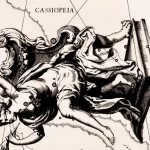
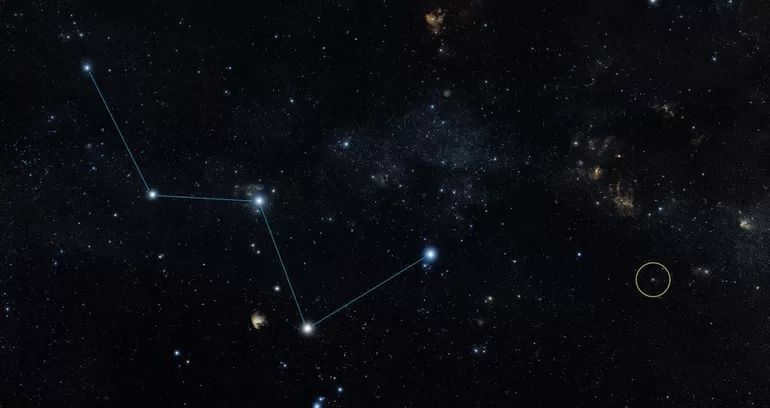
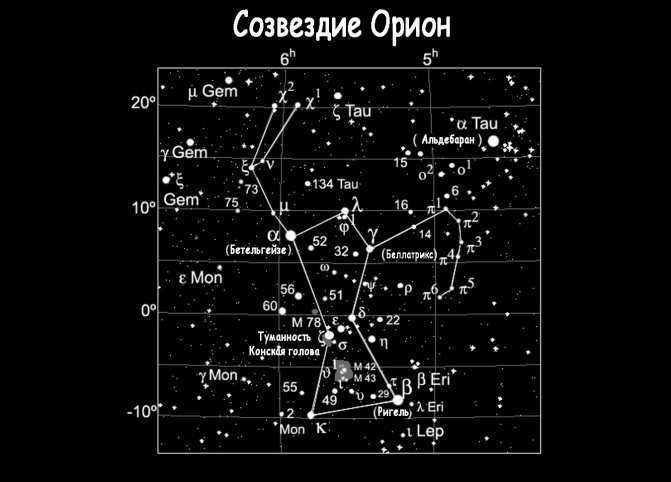



Observation of celestial objects by humans began in ancient times, with people recording their impressions and making assumptions about the workings of the universe. However, due to the lack of necessary equipment for comprehensive observation, people had to rely on imagination, resulting in the creation of incredible myths and legends. Some of these stories have survived to the present day.
Legends from Ancient Greece
The myth surrounding the constellation Cassiopeia is just one of many fascinating stories from ancient Greece. This particular cluster of stars, located in the Northern celestial hemisphere, captivated the imagination of the ancient Greeks, who developed an entire legend around it.
According to this tale, there was once a powerful king named Cepheus who ruled over Ethiopia. He had a young and exceptionally beautiful wife named Cassiopeia, after whom the constellation was named. Cepheus’ kingdom flourished until the sea nymphs grew tired of his wife’s constant boasting and arrogance, and decided to complain to the mighty god Zeus.
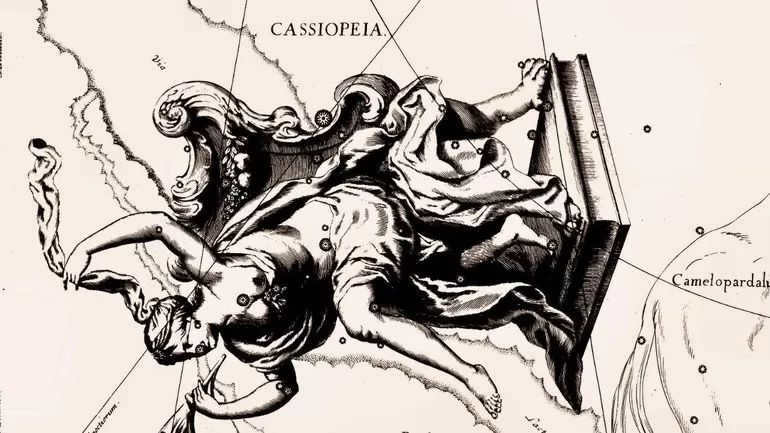
Also check out: The Constellation of the Raven Constellations OverviewProminent stars in the Raven constellationFascinating celestial objects to observeLocating the Raven constellation in the night skyInsights into the history of the Raven constellationAstrological significanceThe Raven is a compact constellation located in the southern hemisphere
Zeus, the ruler of Olympus, was filled with wrath and unleashed his fury upon Ethiopia by sending a monstrous sea creature named Kit. This formidable beast would emerge from the depths of the ocean, terrorizing the inhabitants of the land and dragging them down into the abyss. The king, terrified by the relentless attacks, dispatched messengers to seek aid from Zeus, who happened to be in neighboring Libya at the time. However, the god of thunder remained resolute, insisting that he would only subdue Kit on one condition: the sacrifice of Cepheus’ daughter, the captivating and youthful Andromeda, to the merciless creature.
At that precise moment, however, Kit emerged from the depths of the ocean and made the decision to claim the promised offering in the form of Andromeda. A fierce battle unfolded between Kit and Perseus, with the latter ultimately emerging victorious. Recognizing the heroism displayed by all the characters, the gods made the decision to elevate them to the heavens, resulting in the formation of a constellation bearing their names, as the legend goes.
This captivating story is certain to captivate a child and pique their curiosity in the subject, making it the ideal starting point for introducing them to the wonders of the stars.
Additional information about the discovery
The constellation was already known in ancient times, and the first mention of it can be found in an ancient astronomical catalog created by the late Hellenistic scholar Claudius Ptolemy, who resided in Alexandria, Egypt. The primary name for this star cluster was borrowed from Greek mythology, although in certain Arabic manuscripts, another name was discovered, which can be translated as “sitting woman.”
It is possible that this association was formed due to the distinct shape of the Cassiopeia constellation, which resembles a broken line composed of four interconnected segments. The arrangement of stars in this cluster resembles the Latin letter W or an inverted M. Some Arab astronomers saw it as a hand pointing towards distant stars, although this interpretation is less common nowadays.
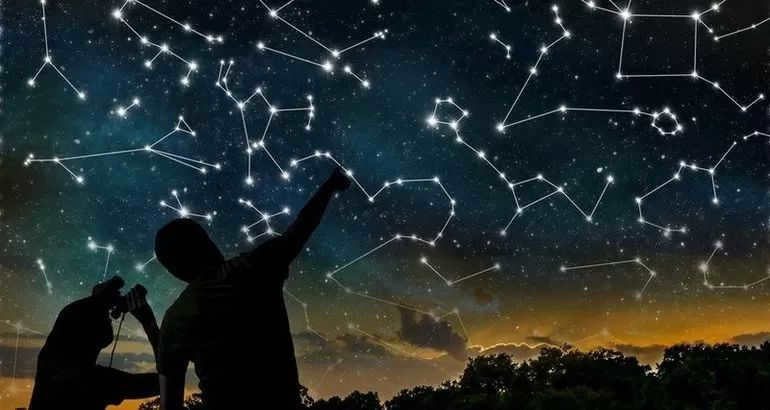
One can easily observe the presence of star formation across the entire territory of Russia. For individuals who are unfamiliar with the appearance of the Cassiopeia constellation, a helpful point of reference can be found by drawing a direct line between the Big Dipper and Polaris. By doing so, one will be able to locate this remarkable collection of stars.
When it comes to the best time to see it, specialists recommend the months of September, October, and November. However, in the central region, you can enjoy the sight of Cassiopeia all year round as it never sets, just like the Big Dipper. During this time, you can also witness an intriguing phenomenon involving the position of Cassiopeia in relation to Polaris. While Cassiopeia is at its highest point in the sky during the autumn and winter months, Polaris descends towards the horizon.
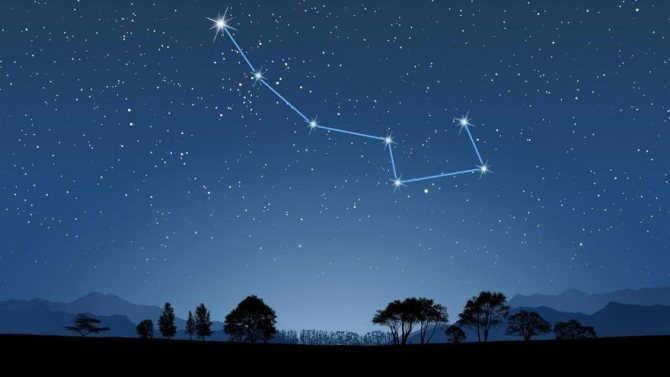
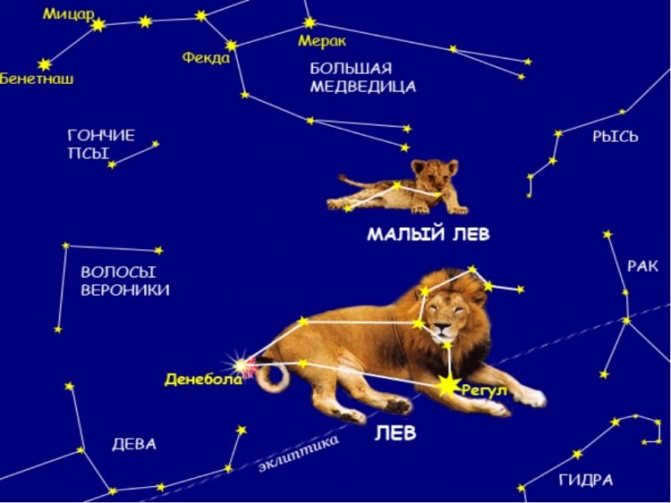
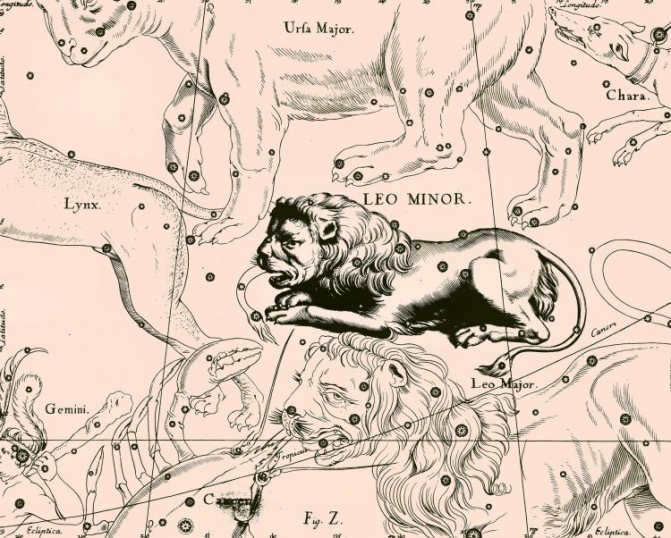
Orion is a constellation that is known for its beauty and prominence in the night sky.
It is easily recognizable due to the arrangement of its stars, which resemble the figure of a hunter. One can easily locate Orion by finding three stars that are aligned in a row. The first star, Betelgeuse, is a red giant that shines 15,000 times brighter than the Sun. The second star, RIGUEL, shines 80,000 times brighter than the Sun.
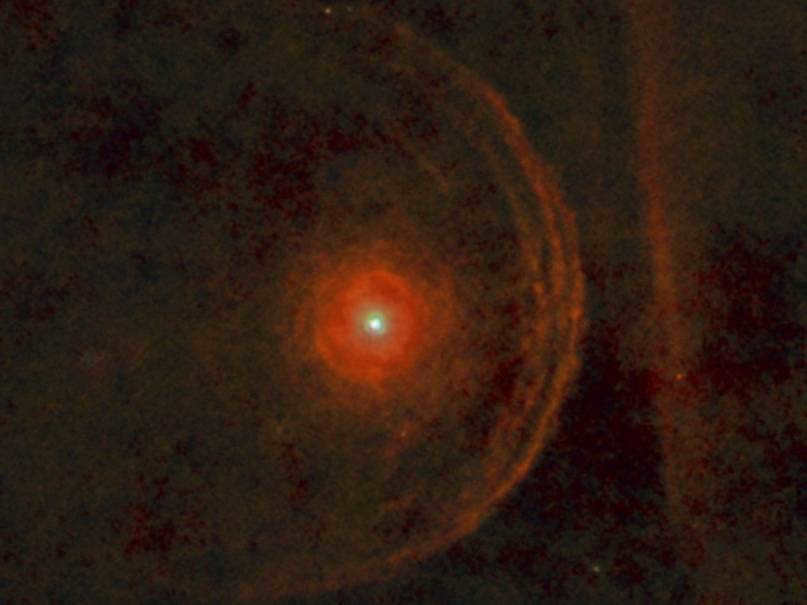
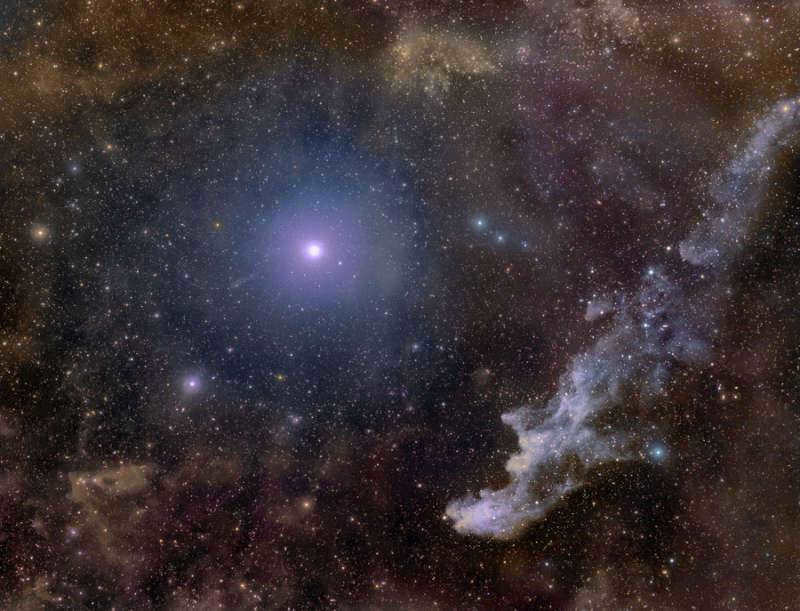
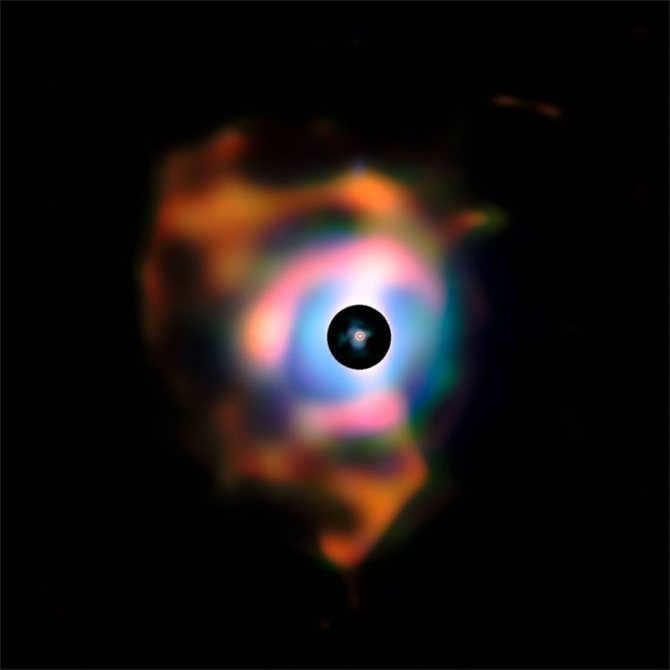
Main Highlights
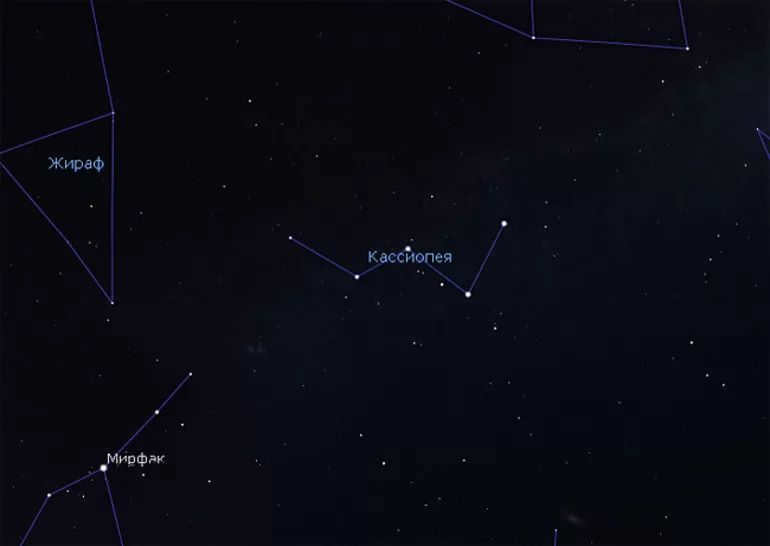
As time went on and the notion of a flat earth resting on three whales became a thing of the distant past, scientists started making one breakthrough after another, discovering new stars and accurately describing their locations and other important characteristics. With the advancement of scientific and technological progress, research began yielding even more precise results, particularly when it came to the stars that are closest to Earth and their large clusters.
The constellation is one of the most extensive ones known to humanity. The majority of it is situated within the Milky Way, with the region being predominantly filled with dispersed clusters. Almost the entire expanse of the constellation remains visible throughout the day, with only a small portion briefly disappearing below the Earth’s horizon. Notable features of the constellation, as determined by scientists, include:
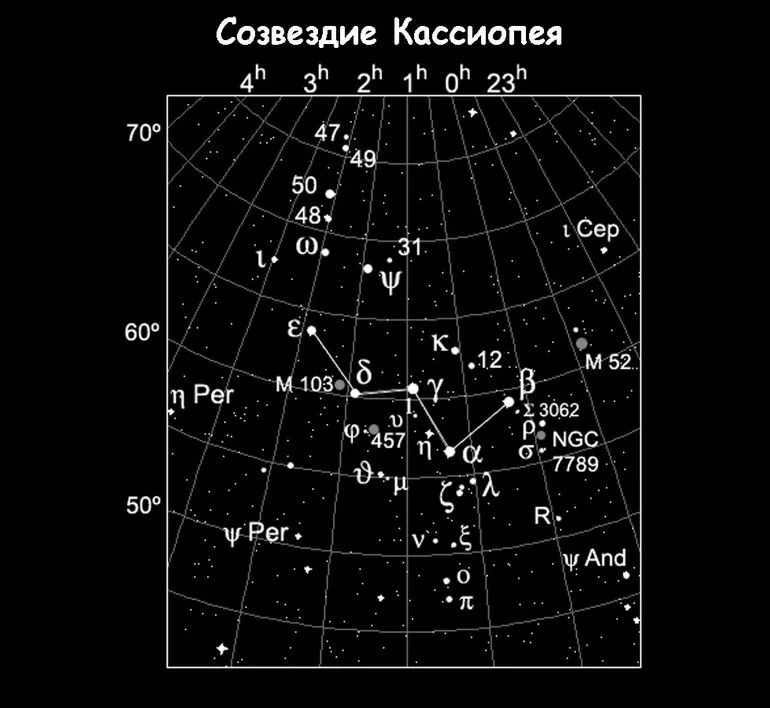
- Cassiopeia covers an area of more than 598 square degrees, making it the 25th largest constellation out of the 88 constellations.
- Approximately, there are over 90 stars in the star cluster, with a brightness exceeding 6m, making them visible to the naked eye as small dots from Earth’s surface.
- The right ascension of Cassiopeia ranges from 22 hours 52 minutes to 3 hours 25 minutes.
- The declination of Cassiopeia ranges from 46 to 77 degrees.
- The constellation Cassiopeia contains four bright stars – Shedar, Kaf, Navi, and Rukba – with a visibility of no more than 3m. Each star is assigned a Latin symbol (α, β, γ, and δ, respectively). These stars form a recognizable pattern in the sky, resembling either a queen on a throne or the letters of the Latin alphabet.
- To fully understand the constellation, it is helpful to create a visual representation of the sky, either through a traditional map or a three-dimensional model. This can be done using available literature or online resources. By visualizing the constellation, children can better grasp its appearance and significance, as simply reading about it can be less effective.
Similarly, when presenting a report on space or a specific constellation, it is important to incorporate visual aids to enhance understanding and engagement.
There are other fascinating details to mention about the star cluster, and we must not overlook the vast expanse of space surrounding it. Therefore, it is important to note that the nearby star clusters Andromeda, Lizard, Cepheus, Perseus, and Giraffe are all in close proximity to the Cassiopeia constellation. These clusters can be documented in the accompanying table, providing a concise summary of their key characteristics.
Noteworthy Astronomical Objects
Despite the limitations imposed by even the most advanced and cutting-edge technology, the exploration of star formation in the constellation has led scientists to identify several remarkable objects that warrant particular scrutiny. As of now, this roster comprises:
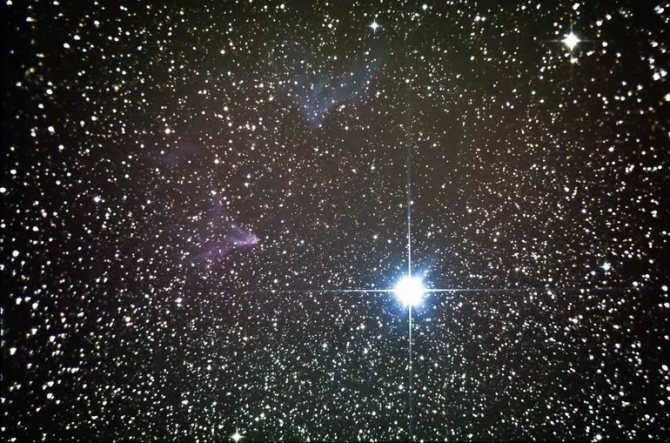
- The star Tycho Brahe was discovered in 1572 and was named in honor of the Danish scientist who identified it. At that time, astronomers were intrigued by the unusually bright glow of the star, which gradually faded over the course of the next year and a half. Little did they know that it was actually a supernova star, and today its remnants span a diameter of over 20 light years. The power of the supernova flash can only be imagined when you consider the distance from Earth to Tycho Brahe, which is approximately 7.5 thousand light years. It is also important to note that Tycho Brahe is currently the most recent supernova star to have been recorded in our galaxy.
- Eta Cassiopeia is a double star in the Cassiopeia constellation, consisting of a yellow giant and a red cold dwarf. The surface temperature of the red dwarf is approximately 3,000 Kelvin. Both stars orbit around their center of gravity, completing a full revolution every 526 years. This star system is relatively close to the Sun, being only 20 light-years away.
- Rho Cassiopeia is one of the largest stars in the cluster. It is officially classified as a cosmic supergiant. To put its size into perspective, Rho Cassiopeia has a mass 40 times that of the Sun and its brightness exceeds the Sun’s by 500,000 times. The brightness of Rho Cassiopeia is not constant and varies due to gas ejections from the star into outer space.
- Just like any other system, it has its own peculiarities, including some remarkable dwarf stars, with the most notable being the yellow star Myu. One of the main characteristics of this vibrant celestial luminary is its remarkable speed of movement, along with its constant change in trajectory. As a result, it is annually distanced from our planet by at least 100 kilometers.
- The constellation Cassiopeia is also remarkable for hosting one of the most potent and hazardous sources of radio-emitting energy, known as Alpha. This nebula was formed as a consequence of the significant explosion that took place in 1667. As for its radio-wave effects, traces of the deadly nebula’s activity were discovered in 1951, when infrared-sensitive photographic plates revealed its presence.
In the enigmatic expanse of the stellar cosmos, there exists an abundance of captivating entities. One cannot help but marvel at the scattered assemblage of clusters, resembling a dragonfly or an owl with an elongated bifurcated tail. Dwarf galaxies, exhibiting epileptic characteristics, coexist with satellite and diffuse nebulae. Notably, there is a colossal gas sector aptly named the Bubble, alongside numerous sources of radio emission.
Writing a report on the topic
To capture the attention of the younger audience, it won’t be difficult as all it takes is to narrate a fairy tale or a myth about the constellation Cassiopeia, accompanied by vivid illustrations. However, writing a school report requires a different approach as it needs to include all the essential information within the allowed word limit. To successfully complete this task, it is advised to follow the following outline:
- Begin with an engaging introduction that grabs the readers’ attention from the very beginning, while keeping it concise.
- The report can be divided into several sections, starting with the most important and useful information about the topic. Towards the end, all the fascinating facts about the constellation can be listed.
- Lastly, there should be a conclusion consisting of a few sentences, similar to the introduction.
In order to enhance clarity, it is suggested to create vibrant illustrations or a photo collage. These can be printed on a large, sturdy sheet of paper. This addition will make the presentation more informative and engaging.
This particular arrangement of stars can be observed throughout the year in the Northern Hemisphere. To get a clear view of the sky, it is recommended to choose a night with no clouds and potentially leave urban areas, as the brightness from buildings can overpower the radiance of even the most luminous stars. Binoculars can also be used to enhance the observation experience.
What should be taken into consideration when trying to locate the constellation Cassiopeia? There is a well-established search method that makes it relatively simple to find Cassiopeia. By following this method a few times, it becomes effortless to spot not just one, but three constellations in the northern sky.
First, we locate the prominent constellation known as the Big Dipper or “big dipper”. It is highly likely that one would be able to identify this star cluster. During the summer months, the Big Dipper can be observed in the northwest direction, while in the fall it shifts towards the north. In winter, it can be found in the northeastern part of the sky, and in spring, it reaches its highest point, known as the zenith. By drawing a line from the outer edge of the “bucket” formed by two stars, we can identify Polaris, which is situated at the very end of the handle of the “small bucket”, also known as the Little Dipper.
Next, we can draw a straight line from the second-to-last star on the handle of the Big Dipper to Polaris. This line should extend until our eyes come across the constellation Cassiopeia. With careful observation, this task should be relatively easy to accomplish.
The story of the hunter Orion:
The ruler of the island of Chios, known as King of Chios, made a promise to Orion that he would give him his daughter, the beautiful Merope, in marriage if he could successfully eliminate all the monstrous creatures that were attacking the island. Orion accomplished this task, but unfortunately, he was betrayed. The king ordered Orion to be put to sleep, blinded, and abandoned on a deserted shore. However, the sun god Helios intervened and restored Orion’s sight. Orion then sought revenge against his enemies. In the end, he met his demise from the sting of a massive and terrifying Scorpion.
With the assistance of illustrations from the textbook, connect the dots to create constellation diagrams. This assignment is intended for second grade students and focuses on exploring the world around them. To complete the task, use the textbook drawings and connect the dots to form the constellation diagrams. You can download a lesson plan on the theme of “Stars” from the website okamoto52.ru. The lesson plan includes activities related to constellations and their brightest stars, such as Cassiopeia, Orion, and Swan. It also provides information on the starry sky and how to connect the dots to create constellation diagrams. This activity will help students become familiar with the world of stars and constellations.
In ancient times, people imagined the change of day and night differently. The ancient Egyptians believed that the sun was carried across the sky by a god. The first astronomy textbook in history was discovered, which showed how the stars of constellations could be connected to form meaningful figures. As a child, I was familiar with various constellations like Bears, Swans, and Cassiopeia because my parents introduced them to me. In the workbook for the Environment World class, you can find answers to the questions provided. The workbook is designed for second-grade students and is part of the School of Russia curriculum.
Lesson 2 focuses on constellations and helps students navigate the starry sky. Some of the constellations covered in the lesson include Lyra, Swan, Eagle, Cassiopeia, Cepheus, Ascendant, and Orion. Students will also learn about the main stars of these constellations. They will engage in search tasks using an electronic planetarium. To connect the dots and form the constellations, they need to connect the two extreme stars. This lesson aims to familiarize children with stars and constellations.
To complete the assignment, use the textbook drawings to connect the dots and create constellation diagrams for Cassiopeia, Swan, and Orion. These activities will help students understand the concept of the starry sky and familiarize themselves with different constellations. The swan constellation has a particularly bright star marking its tail, making it one of the brightest stars in the sky.
NGC 2859: An Impressive Lenticular Galaxy
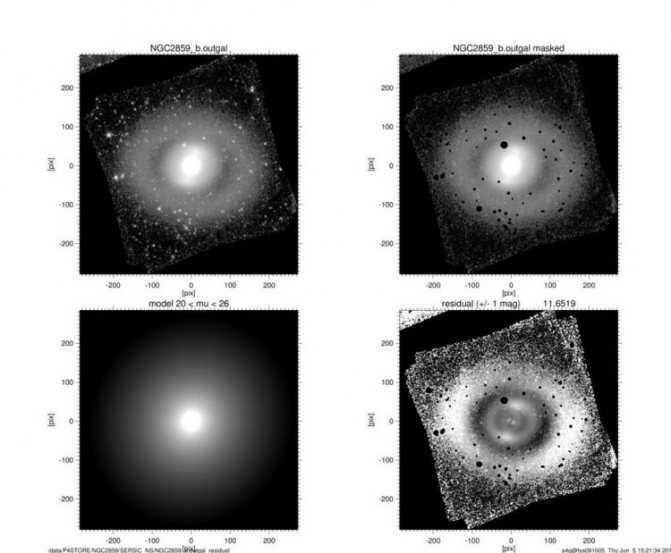
Situated on the edge of the Lynx constellation, NGC 2859 is a distant galaxy that is located approximately 83 million light years away from our planet. With a magnitude of 10.7m and a surface brightness of 14m, it shines brightly in the night sky. The galaxy has a size of -4.6′ × 4.1′. In the captivating image above, you can also observe a brilliant star positioned in close proximity to the galaxy. Despite its luminosity, this star has a magnitude of 7 and cannot be seen with the naked eye.

When you gaze up at the heavens during a cloudless evening, an abundance of shimmering lights catch your eye. These luminous dots are known as stars, and they can either stand alone or form intricate patterns called constellations. Our neighboring celestial body, the Sun, sits closest to us and radiates the most brilliance. Now, let us delve into an intriguing subject – Starry Skies (3rd grade).

The Origin of Stars
Astronomy, the field of study that examines stars, derives its name from the Greek word “astra,” which means star. Astronomers utilize a specialized and highly potent instrument known as a telescope to observe stars.
A star is a celestial entity comprised of luminous gas. Stars are formed in the vastness of space from aggregations of interstellar gas. These aggregations begin to rotate at exceedingly high velocities and gradually grow in size by several multiples. Within these formations, temperatures soar to immense values – reaching several million degrees – causing them to emit light, thus marking the birth of a new star.
The Sun is the nearest star to our planet and is significantly larger than the Earth. Due to its intense brightness, it is not possible to observe other stars during daylight hours as they are situated at a greater distance and emit a less brilliant glow. It is worth noting that there are stars within our galaxy that radiate a much more luminous light than the Sun, but their location in relation to the Earth is extremely distant.
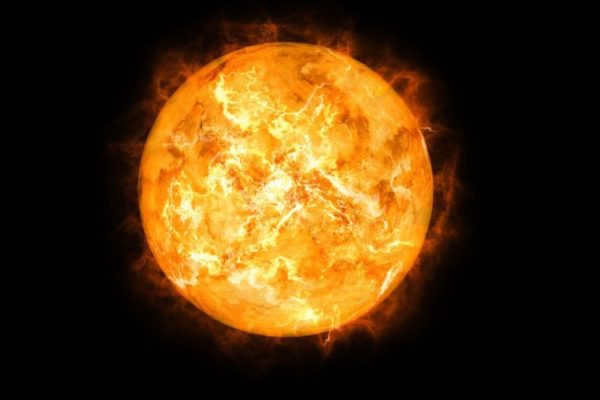
At first sight, all stars may seem to have the same hue, namely white, however, this is not the case. Blue stars can be identified as the most scorching and dazzling, followed by white stars, and subsequently yellow and orange stars. The cooler the surface temperature of a star, the more reddish it appears.
Star Groups
In the vast expanse of the Galaxy, certain stars come together and form clusters known as constellations. These stars are created from a shared dust-gas cloud and are positioned close to each other as a result of the gravitational attraction between them.
that can be read in conjunction with this one

The majority of star clusters are situated within the Milky Way. There are over a thousand of these groups of stars identified by scientists, although they eventually break apart over time.
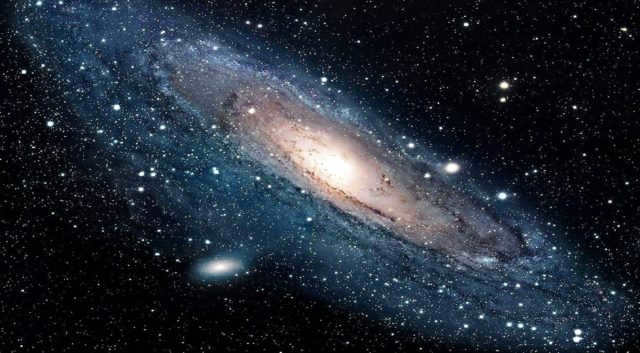
The arrangement of stars in relation to each other remains unchanged in the sky. Since ancient times, people have observed the brightest constellations and named them after mythical creatures, characters from stories, and legends.
In 1930, the International Astronomical Union officially recognized and registered 88 constellations. These constellations are divided into three groups based on their location:
- There are a total of 31 constellations in the northern hemisphere;
- The southern hemisphere has a total of 48 constellations;
- There are 9 constellations that can be seen in both hemispheres.
Constellations in the northern and southern hemispheres
The night sky is adorned with a multitude of constellations, each possessing its own unique charm and radiance. Here are some notable ones:
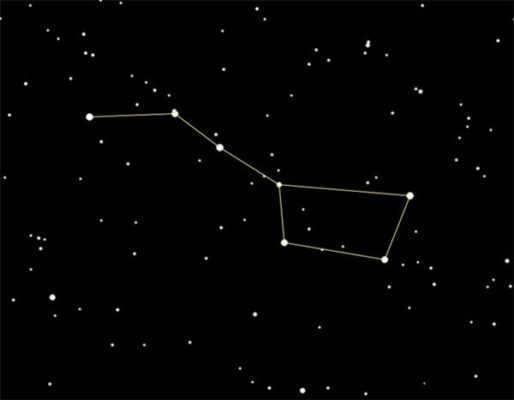
- The Big Dipper and Little Dipper constellations are well-known for their role in guiding travelers with the help of Polaris, the North Star. These two constellations are easily visible throughout the year in the northern hemisphere.
- The Cassiopeia constellation can also be seen in the sky year-round. Its stars are arranged in the shape of the letter “M” and it is named after the queen in ancient Greek mythology, Cassiopeia.
- The Orion constellation is a stunning constellation that can be admired in the winter. It features three bright and beautiful stars in its belt.
- During the autumn and summer seasons, you can observe the constellation known as the Swan. This particular constellation bears a striking resemblance to the graceful form of a swan with its wings gracefully extended. Notably, nestled within the Swan’s majestic tail lies a star that captivates the heavens with its exceptional radiance and breathtaking beauty.
What did we discover?
Through our exploration of the night sky, we have gained knowledge about the origins of the celestial lights known as stars. Additionally, we have uncovered the factors that determine their color and the scientific methods employed in their study. It is fascinating to note that the stars come together to form constellations that remain fixed in their positions for countless centuries.
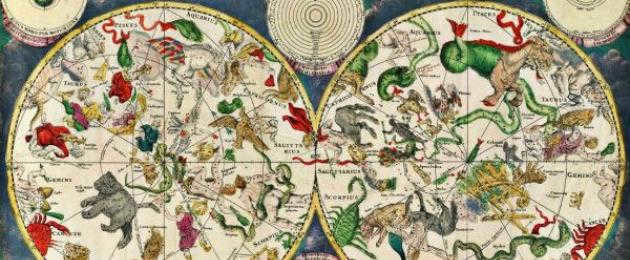
This star map provides a comprehensive view of the constellations that dominate the winter night sky, complete with detailed descriptions, characteristics, photographs, and diagrams of stars, celestial objects, and asterisms.
Behold the splendor of the winter night sky, which encompasses one of the spiral arms of our Milky Way galaxy. Within this cosmic tapestry, you will find a staggering array of celestial wonders, including seven of the 21 brightest stars (known as first magnitude stars).
Begin your celestial journey by locating the largest constellation, Orion. Shaped like a rectangle, Orion features a diagonal band of three brilliant stars known as Orion’s Belt, positioned at opposite corners. Just below the belt, you’ll discover three additional stars, often referred to as the “sword.” However, don’t be deceived by appearances, as the middle “star” is not a star at all.
Once again, we return to the belt and ascend until we spot the star cluster in the shape of a V – . These stars symbolize the head of Taurus, the bull. The bright red star Aldebaran, also known as the eye of the bull, stands out in the upper left corner. As we continue past the Hyades, we will be captivated by the Seven Sisters – . While six of them can be seen with the naked eye, the seventh sister will require the use of binoculars.
The upper horn of Taurus is a part of a pentagon, known as the constellation of Ascendant, which includes the yellow star Capella. In the middle of winter, Ascendant is situated high above us. This particular pattern is said to depict a man on a chariot holding a goat in his hands (the ancient people had quite an imaginative mind). And just beneath, there is a small triangle representing the children of the goat.
Gemini can also be located in this area. Trace a line upwards from Orion to Rigel, then continue past Betelgeuse and observe a rectangular constellation with prominent stars. To the left, in between them and Sirius, you will find Procyon, forming an equilateral triangle with Betelgeuse and Sirius.
Pleshakov came up with a brilliant concept – to develop a children’s atlas that makes it easy to identify stars and constellations. Our educators embraced this idea and created their own definitive and visually appealing atlas, which offers even more comprehensive information.
What do constellations represent?
When you gaze up at the sky on a clear night, you will be greeted by a mesmerizing display of dazzling lights in various sizes, adorning the celestial dome like a scattering of precious gems. These radiant beacons are known as stars. Among them, a few seem to congregate in clusters and, upon closer examination, can be classified into distinct groups. These assemblages are referred to as “constellations” by humans. Some of these constellations may bear a resemblance to a pail or the intricate contours of animals, but it is important to note that they are largely products of the human imagination.
Throughout the centuries, astronomers have made attempts to study clusters of stars and have attributed them with mystical qualities. People have strived to organize and identify common patterns among them, resulting in the creation of constellations. Constellations have been extensively researched, with some being subdivided and others being refined. As an example, the constellation Argo was divided into smaller constellations such as Compass, Kiel, Sail, and Korma.
The history behind the naming of constellations is also quite fascinating. In order to aid in memorization, constellations were given names that shared a common element or were inspired by literary works. For instance, certain constellations were observed to rise during periods of heavy rainfall, leading to the names Capricorn, Whale, Aquarius, and the constellation of Pisces.
In order to classify all the constellations, a decision was made in 1930 at a meeting of the International Astronomical Union to officially register 88 constellations. This decision stated that constellations are not made up of groups of stars, but rather they represent different parts of the night sky.
What do constellations represent?
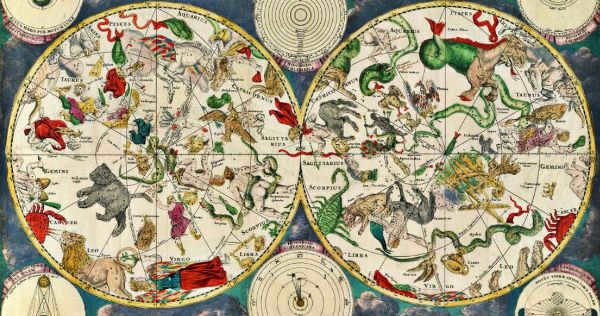
Constellations vary in the quantity and luminosity of the stars that constitute their composition. Distinguishing themselves are the 30 most prominent assemblages of stars. The most expansive constellation in terms of area is known as the Big Dipper. It is composed of 7 bright stars and 118 stars that can be seen without the aid of a telescope.
The smallest constellation, situated in the southern hemisphere, is referred to as the Southern Cross and is not visible to the naked eye. It comprises 5 bright stars and 25 stars that are less visible.
The Lesser Horse is the tiniest constellation in the northern hemisphere and is comprised of 10 faint stars that are visible without the aid of a telescope.
The constellation of Orion is regarded as the most exquisite and brilliant. It consists of 120 stars that can be seen without the aid of a telescope, with 7 of them being exceptionally bright.
All constellations are divided into two hemispheres: the northern and southern. If you live in the southern hemisphere, you won’t be able to see the star clusters in the northern hemisphere, and vice versa. Out of the 88 constellations, 48 are located in the southern hemisphere, 31 in the northern hemisphere, and 9 are found in both hemispheres. The northern hemisphere can be easily identified by Polaris, a bright star that always shines in the sky. Polaris is located at the outermost tip of the handle of the Big Dipper.
Because the Earth orbits around the Sun, it prevents us from seeing certain constellations, resulting in the changing of seasons and the shifting position of this celestial body in the sky. During winter, our planet is located opposite to its position in summer within the solar orbit. Thus, during each season, specific constellations are visible. For instance, during the summer months, one can observe the triangle formed by the stars Altair, Vega, and Deneb in the night sky. In winter, there is an opportunity to marvel at the exquisitely beautiful Orion constellation. This is why people sometimes refer to constellations as “fall constellations,” “winter constellations,” “summer constellations,” or “spring constellations.”
The best time to view the constellations is during the summer season, and it is recommended to do so in an outdoor setting, away from urban areas. While some stars are visible without the aid of a telescope, others may require one for optimal viewing. The most prominent constellations to observe include the Great Bear, Little Bear, and Cassiopeia. As for the autumn and winter seasons, Taurus and Orion are particularly noticeable in the night sky.
Among the stunning constellations that can be seen in Russia in the northern hemisphere, there are Orion, Ursa Major, Taurus, Canis Major, and Canis Minor.
By observing their arrangement and allowing your imagination to roam freely, you may perceive a captivating hunting scene, reminiscent of an ancient fresco, that has adorned the night sky for over two millennia. The fearless hunter Orion is always portrayed accompanied by various animals. To his right, Taurus can be seen in mid-stride, while the hunter wields a club in an attempt to strike him. At Orion’s feet, you will find the loyal Canis Major and Canis Minor.
The constellation Orion
Orion is a prominent constellation located on the celestial equator and visible from both hemispheres. It is one of the most recognizable constellations in the night sky and has been known since ancient times. The constellation is named after Orion, a hunter in Greek mythology.
Orion is depicted as a warrior holding a club and shield, with a belt made up of three bright stars. The three stars of Orion’s belt are known as Alnitak, Alnilam, and Mintaka. These stars are surrounded by a number of other bright stars, including Betelgeuse and Rigel, which are two of the brightest stars in the night sky.
Orion is also home to several notable deep sky objects, including the Orion Nebula, which is a vast cloud of gas and dust where new stars are being formed. The nebula is visible to the naked eye and is a popular target for amateur astronomers.
In addition to the Orion Nebula, the constellation also contains several other famous objects, such as the Horsehead Nebula, the Flame Nebula, and the Witch Head Nebula. These objects are all part of the larger Orion Molecular Cloud Complex, which is one of the closest regions of star formation to Earth.
Overall, the constellation Orion is a fascinating and visually striking constellation that has captivated humans for centuries. Its prominent position in the night sky and its association with myth and legend make it a favorite among stargazers and astronomers alike.
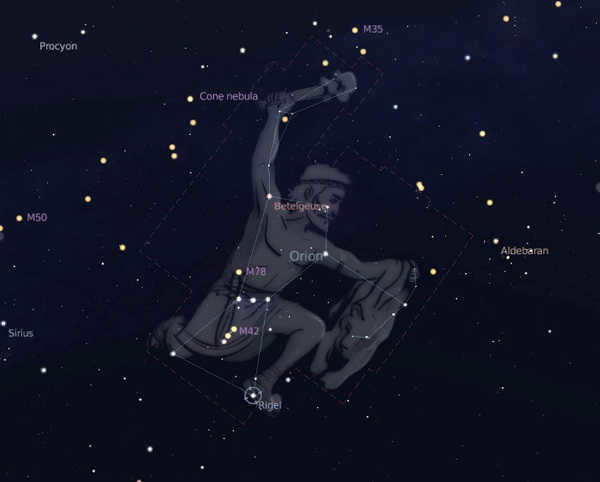
This constellation is the largest and most vibrant. It can be easily observed during the autumn and winter seasons. Orion is visible throughout Russia. The arrangement of its stars resembles the silhouette of a human figure.
The origin of this constellation can be traced back to ancient Greek mythology. According to the myths, Orion was a courageous and powerful hunter, the son of Poseidon and the nymph Emvriala. He frequently went hunting with Artemis, but one time, after defeating her in a hunt, he was struck by the goddess’ arrow and perished. Following his death, he was transformed into a constellation.
Rigel, the most brilliant star in Orion, shines with a bluish-white radiance and is classified as a supergiant. It is 25,000 times brighter and 33 times larger than the Sun. Despite its impressive size, Rigel is still smaller than Betelgeuse.
Occupying Orion’s right shoulder, Betelgeuse dwarfs the Sun with a diameter 450 times greater. If it were placed in the Sun’s position, Betelgeuse would extend to the orbit of Mars, surpassing the size of the four inner planets. Betelgeuse outshines the Sun by a factor of 14,000.
In addition to Rigel and Betelgeuse, the constellation Orion also features a nebula and various asterisms.
The constellation Taurus
Taurus is a magnificent constellation located in the northern hemisphere. It can be found northwest of Orion and is situated between the constellations Aries and Gemini. In close proximity to Taurus, you can also spot other stunning constellations such as Ascendant, Whale, Perseus, and Eridanus.
This constellation can be observed throughout most of the year in the middle latitudes, excluding the second half of spring and early summer.
The origins of Taurus can be traced back to ancient myths, which tell the story of Zeus transforming into a calf in order to abduct the goddess Europa and take her to the island of Crete. The description of this constellation was first recorded by Eudoxus, a mathematician who lived in ancient times.
Nat or El-Nat (the bull’s horns) is the second brightest star in the constellation, situated near Ascendant. It possesses a luminosity that is 700 times greater than that of the Sun and a size that is 4.5 times larger.
Within the constellation, there exist two exquisitely stunning dispersed star clusters, namely the Hyades and the Pleiades.
The Hyades, composed of approximately 200 stars, are a remarkable 650 million years old. They can be effortlessly spotted in the night sky due to the presence of Aldebaran, which stands out prominently amidst them.
The Pleiades, named after their nine segments, consist of seven parts that pay homage to the seven sisters of ancient Greece (the Pleiades), while the remaining two segments are named after their parents. The Pleiades are particularly visible during the winter season and encompass approximately 1000 celestial bodies.
The Crab Nebula is an equally fascinating formation in the Taurus constellation. It originated from a supernova explosion in 1054 and was officially identified in 1731. Situated 6500 light years away from Earth, this nebula boasts a diameter of approximately 11 sv. years.
Part of the Orion family, the Taurus constellation is adjacent to Orion, Monoceros, Canis Minor, and Lepus.
Ptolemy was the first to document the existence of the Canis Major constellation in the 2nd century.
According to mythology, Canis Major was once known as Lelap. Lelap was an incredibly swift dog capable of outpacing any prey. On one occasion, he pursued a fox that matched him in speed. The outcome of their race was predetermined, and Zeus transformed both animals into stone, placing the dog among the stars.
The Big Dog constellation is easily visible during the winter season. The most brilliant star in not only this constellation, but in all others as well, is Sirius. Sirius has a bluish glow and is located relatively close to Earth, at a distance of 8.6 light years. It is not as bright as Jupiter, Venus, and the Moon in our solar system. The light from Sirius takes 9 years to reach Earth, and it is 24 times brighter than the sunlight. This star has a companion known as Puppy.
Sirius is associated with the origin of the term “Vacation”. This is because this star appeared in the sky during the hot summer season. Since Sirius is called “kanis” in Greek, the Greeks began to refer to this period as vacation.
The constellation Canis Minor
The Canis Minor is surrounded by neighboring constellations such as the Monoceros, Hydra, Cancer, and Gemini. This particular constellation portrays the faithful animal that accompanies the hunter Orion, alongside the Canis Major.
The origin story behind the creation of this constellation is quite fascinating, as per the myths. According to the tales, the Canis Minor is Mera, the dog of Icarius. This man was taught the art of winemaking by Dionysus, resulting in a potent drink. One day, his guests falsely assumed Icarius was attempting to poison them and tragically killed him. Mera, grief-stricken for his master, eventually passed away as well. Zeus then immortalized him as a constellation in the vast night sky.
The optimal time to observe this constellation is during the months of January and February.
The most prominent stars in this constellation are Portion and Gomeisa. Portion is located 11.4 light-years away from Earth. It is slightly more luminous and hotter than the Sun, but it doesn’t differ much from it in terms of physical characteristics.
Gomeisa can be seen with the naked eye and emits a blue-white light.
The Ursa Major constellation
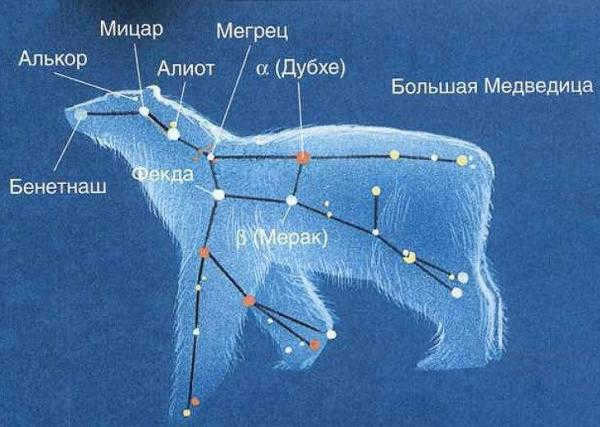
The Big Dipper, which has the shape of a dipper, stands as one of the largest constellations among the three. It has been mentioned in the writings of Homer as well as in the Bible. This constellation has been extensively studied and holds significant importance in various religions.
It shares borders with constellations such as Aquarius, Leo, Lion, Hound Dogs, Dragon, and Lynx.
According to Greek mythology, the Big Dipper is associated with Callisto, a beautiful nymph and lover of Zeus. As a punishment, Zeus’ wife Hera transformed Callisto into a bear. One day, this bear encountered Hera and her son Arcas, who was also the son of Zeus, in the forest. To prevent a tragedy, Zeus transformed both the son and the nymph into constellations.
The Big Dipper is composed of seven stars, with three of them being the brightest: Dubhe, Alkaid, and Aliot.
Dubhe, a red giant, serves as a pointer to Polaris and is located 120 light years away from Earth.
Alcaide, the third most luminous star in the constellation, symbolizes the conclusion of the tail of the Big Dipper. It is situated 100 light-years distant from Earth.
Aliot stands out as the most luminous star in the constellation. It represents the tail. Due to its luminosity, it serves as a navigational aid. Aliot radiates with a brilliance 108 times greater than that of the Sun.
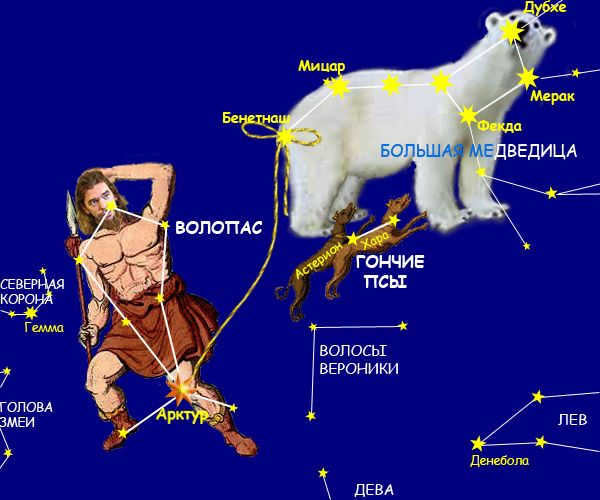
These constellations are the most brilliant and captivating in the northern hemisphere. They can be observed effortlessly on a crisp autumn or winter night with the naked eye. The legends surrounding their creation allow one’s imagination to roam freely, envisioning the mighty hunter Orion chasing his prey alongside his loyal hounds, while Taurus and the Big Dipper keep a watchful eye on him.
Russia is positioned in the northern hemisphere, granting us a glimpse of only a handful of the countless constellations that adorn the night sky. The only variation lies in their position in the sky, which changes depending on the time of year.
During a late winter evening in the southern region of the sky, one cannot fail to observe three brilliant stars. They are situated in close proximity to each other, appearing as if they are aligned in a straight line, with a slight tilt towards the horizon. This particular section of the sky belongs to Orion, or more accurately, its central portion. Orion is an incredibly vast constellation. It is composed of eight luminous stars that form a pattern resembling a colossal arch in the eyes of many amateur astronomers. However, in ancient times, people gazing at this constellation envisioned a mighty hunter, equipped with a sturdy wooden weapon and a substantial shield. The three stars arranged in a row are commonly referred to as the “belt” of Orion, from which an arrow quiver hangs. Within this constellation, there are numerous other notable bright stars. Two of them, named Betelgeuse and Rigel, have Arabic origins and translate to “shoulder of the giant” and “leg” respectively.
The constellation Orion is often linked to tales of a strikingly attractive youth. He was born to Poseidon, the ruler of the oceans, and Euryala, a youthful oceanid. Orion gained renown for his immense size and remarkable attractiveness, and was also among the most skilled hunters who had the privilege of accompanying the goddess Artemis herself.
Once upon a time, a man named Orion caught sight of the stunning daughter of King Oenopion, who ruled over the island of Chios. Orion was instantly captivated by the beauty of Merope and decided to ask for her hand in marriage. King Oenopion agreed to the proposal, but with a condition – Orion had to rid the island of its wild and dangerous beasts. Determined to win the hand of his beloved, Orion embarked on a mission to eliminate the threats. He succeeded in his task and returned to the king, expecting to marry Merope. However, to his dismay, the king reneged on his promise and denied him his daughter’s hand. Enraged by this betrayal, Orion took matters into his own hands and forcefully took Merope as his bride. Seeking justice for his daughter, King Oenopion turned to his father, the god Dionysus, for help. In a moment of drunken rage, Orion was lured into a deep sleep on the seashore, where the treacherous king gouged out his eyes, leaving him blind. Orion faced numerous trials and tribulations, but he persevered. It was only when he reached the farthest shore of the mighty ocean that his sight was restored. It was there that the beautiful goddess of the morning dawn, Eos, spotted the mighty Orion and whisked him away in her chariot.
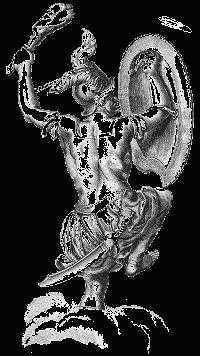
There is another myth associated with the constellation Orion. While he was hunting in a forest, Orion happened to see the seven sisters of the Pleiades. These sisters were the daughters of the giant Atlas. Orion, being a passionate young man, immediately fell deeply in love with them and tried to approach them. However, the Selene nymphs were extremely timid and scared. As soon as the hunter tried to talk to them, they ran away in fear. Afraid that he would never see them again, Orion began chasing after them. The young nymphs kept running without looking back until they became too exhausted to continue. At that point, they prayed to their patroness Selene for help. The goddess heard their prayers and transformed the sisters into beautiful snow-white doves. She then placed them in the sky in the form of a white dove.
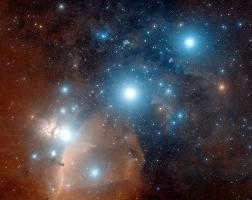
There are multiple tales linked to the demise of the formidable hunter. The constellation Orion recounts one of these stories. As per this myth, Orion was stung by a colossal scorpion, summoned for the audacity of the courageous youth to touch its remains during a hunt. However, the goddess Selene, who harbored affection for Orion, called out to Zeus, who elevated him to the heavens, where the mighty hunter continues to pursue his prey. His constellation never crosses paths with the enormous scorpion in the celestial domain.
Without a doubt, the region where Orion is situated in the nighttime sky is incredibly stunning and illuminated. As it ascends above the horizon, a hexagon consisting of seven of the most brilliant first magnitude stars comes into view, with Betelgeuse positioned at its core. This assemblage of stars encompasses Capella, Procyon, Rigel, Pollux, Sirius, and Aldebaran. Numerous individuals, even those without any connection to astronomy, can effortlessly locate the constellation Orion in the wintry sky, and an image of it can be found in all astronomical encyclopedias.
In winter, you can easily spot the constellations Taurus and Gemini, as well as the brightest star in the sky, Sirius (part of the Big Dog constellation). These constellations, along with Orion, are easily recognizable. In Figure 2 of Sergei Iv’s answer (with a total of 29.6K views), the constellations are clearly visible. By extending a line from the stars Alnitak (the left star of Orion’s belt) and Mintak (the right star), you can locate Aldebaran (the Eye of the Bull) in the Taurus constellation on the right and Sirius (the Big Dog) on the left.
If you continue the line from Mintak and Betelgeuse, you will also come across the Twins Castor and Pollux.
In the Taurus constellation, you have the opportunity to witness the Pleiades (recently formed stars, in astronomical terms), which form the tail of the constellation. They also create a small dipper in the sky (often mistaken for the Little Bear). To facilitate recognition in the sky, I will provide drawings with outlines.
Let’s not forget about the Big and Little Bears, which are equally stunning as Orion and visible throughout the year. However, they are particularly magnificent and easily identifiable during winter. Another recognizable constellation in the winter sky is the W-shaped Cassiopeia, located on the opposite side of the sky from the Big Dipper.
There is one final detail to mention regarding the celestial body Betelgeuse, situated in the Orion constellation. It is on the verge of undergoing a cataclysmic supernova event, (or perhaps it has already undergone this event, however, the resulting light has yet to reach our planet). When this occurs, Betelgeuse will emit a luminosity equivalent to that of the Moon, rendering it visible even during daylight hours. Given the unpredictable nature of this phenomenon, it could transpire at any given moment (even at this very instant, or conceivably in 10,000 years, a mere blink of an eye in cosmic terms), but it is an inevitability. Astronomers diligently maintain constant vigilance over this star, so as not to miss its occurrence. Ultimately, the Orion constellation will inevitably lose its prominent shoulder.
From a visual standpoint, it is entirely feasible to observe the configurations of stars known as constellations, which are essentially reflections of zodiacal combinations.
In Moscow, it may be challenging to observe anything in the sky due to the excessive city lights. However, if you venture outside the city, particularly in the suburbs or a remote village, you will have a better chance of witnessing the following celestial phenomena:
One of the notable constellations visible in the sky is Orion. Here’s how it appears:
Additionally, as midnight approaches, you can use a telescope to observe other smaller constellations. Despite their size, they are still visible:
Unfortunately, within Moscow itself, the urban lights make it difficult to see anything. However, if you travel to the Moscow region and find a location away from the bright city lights, you will discover a plethora of fascinating sights.
One of the most captivating sights is the stunning constellation Orion. It is prominent during the autumn and winter months, providing a breathtaking spectacle.





